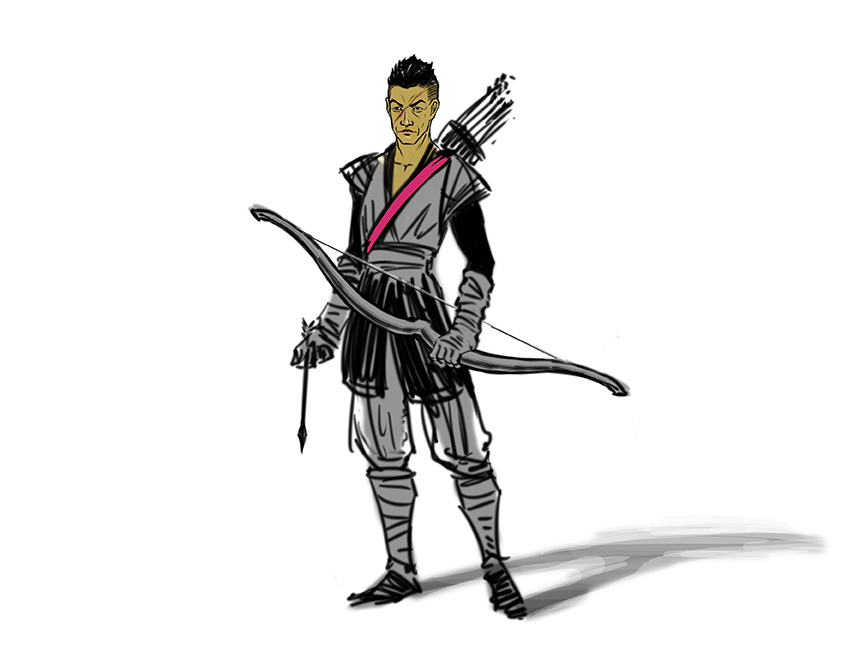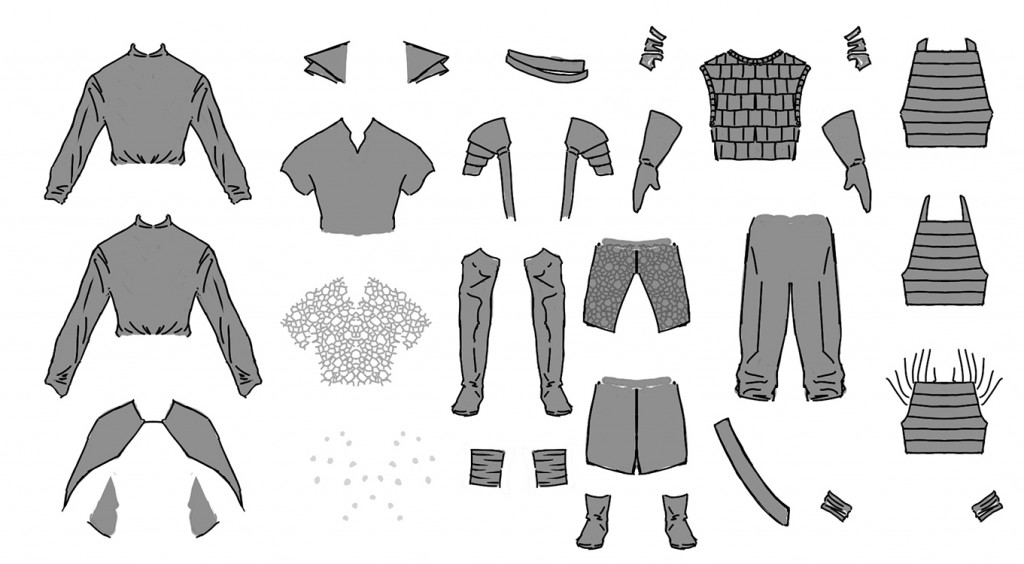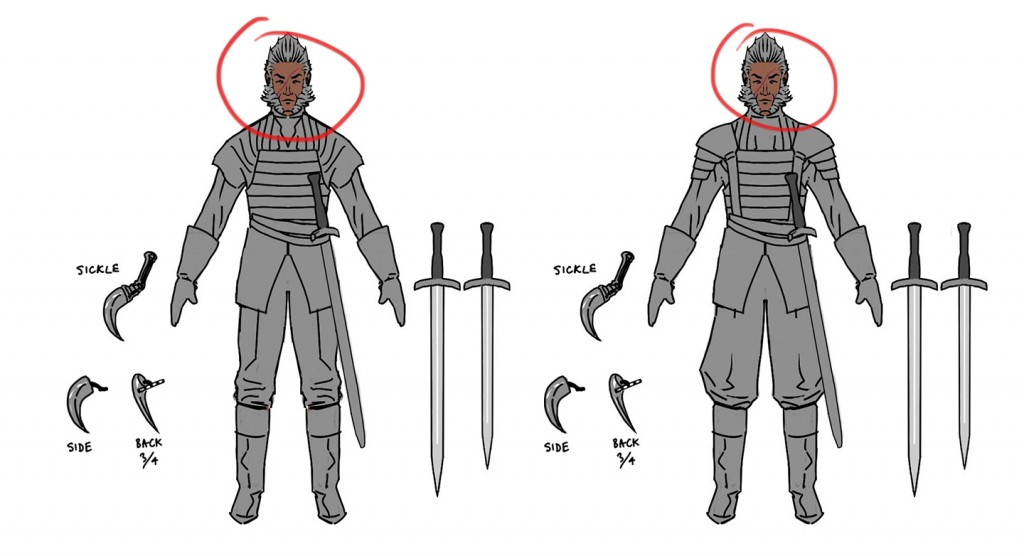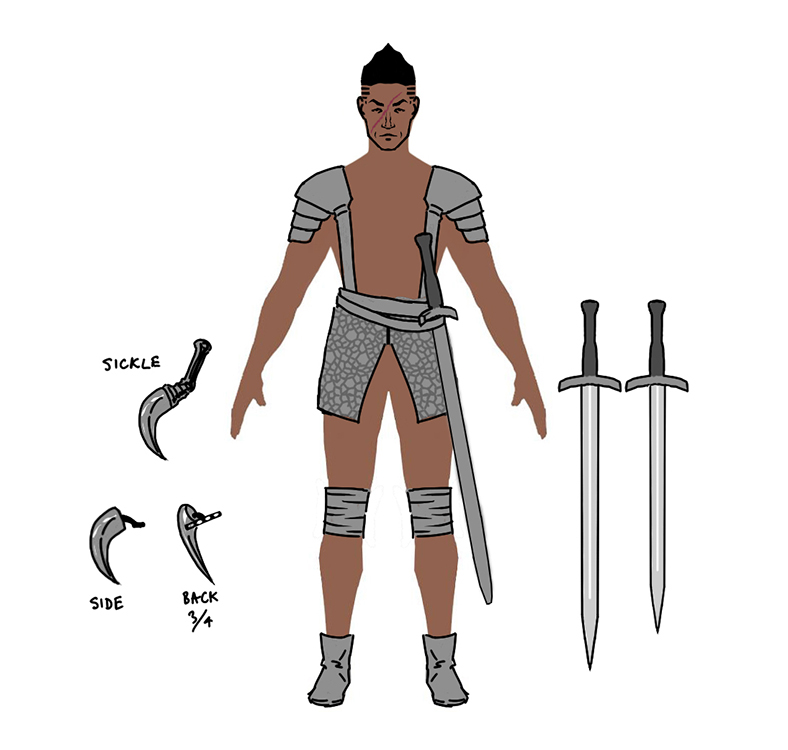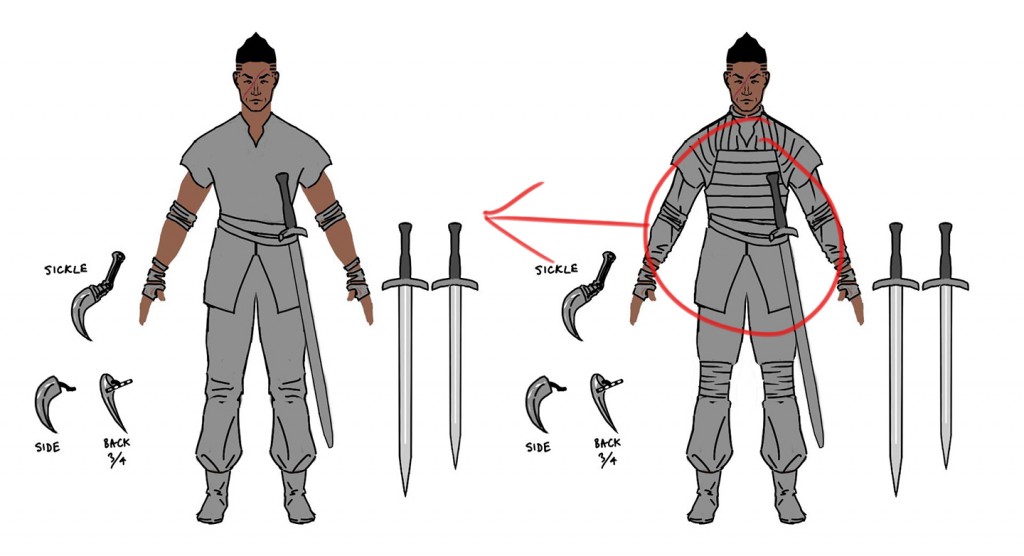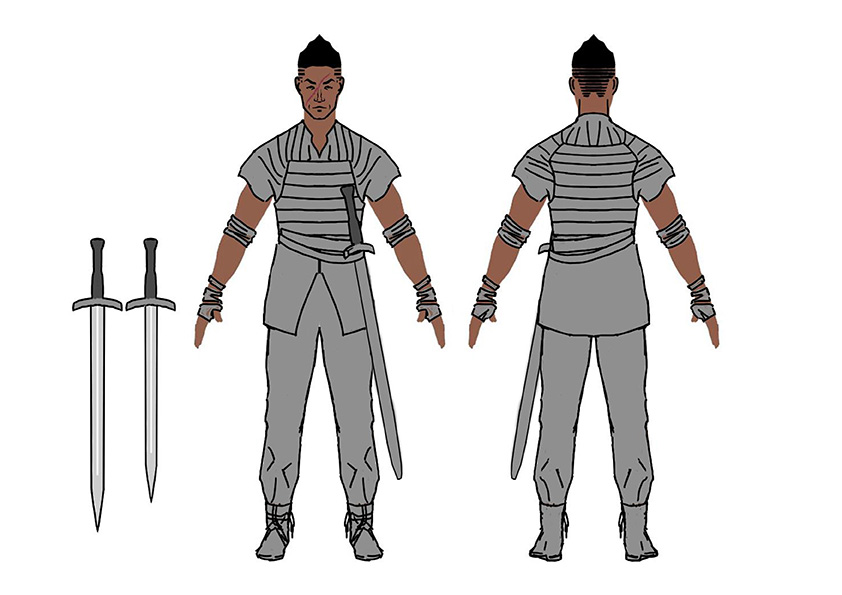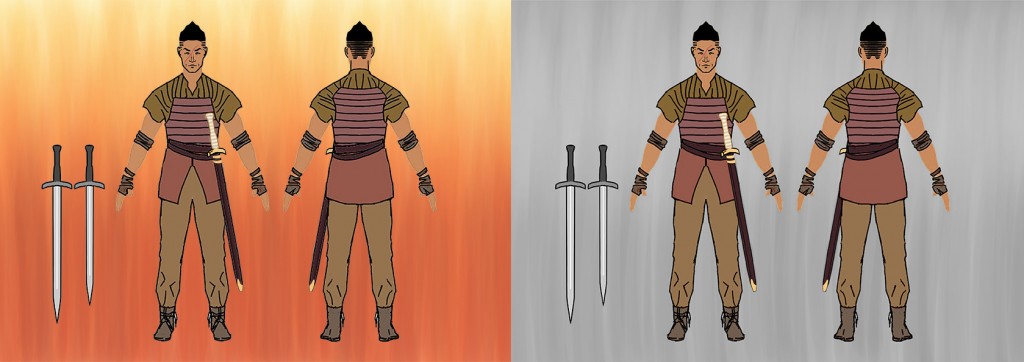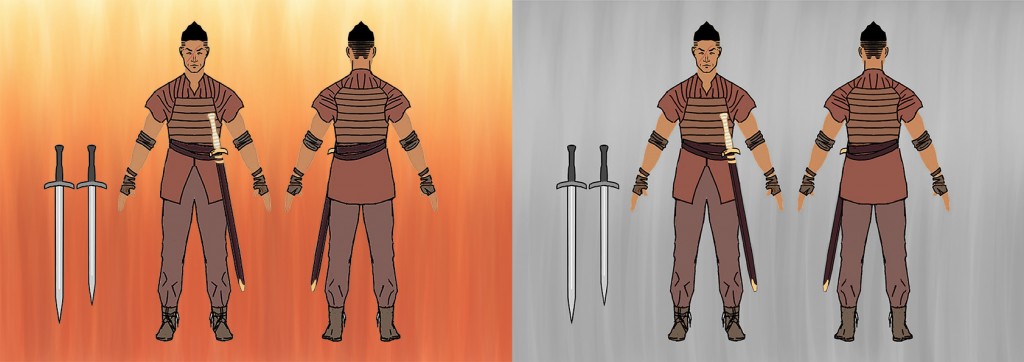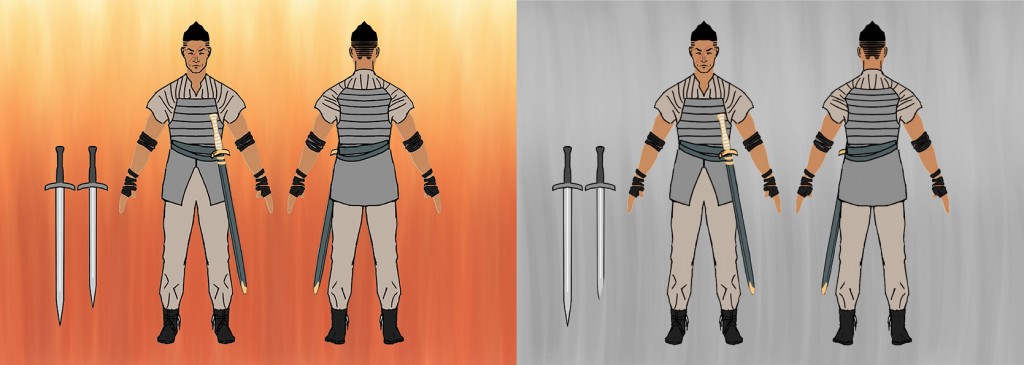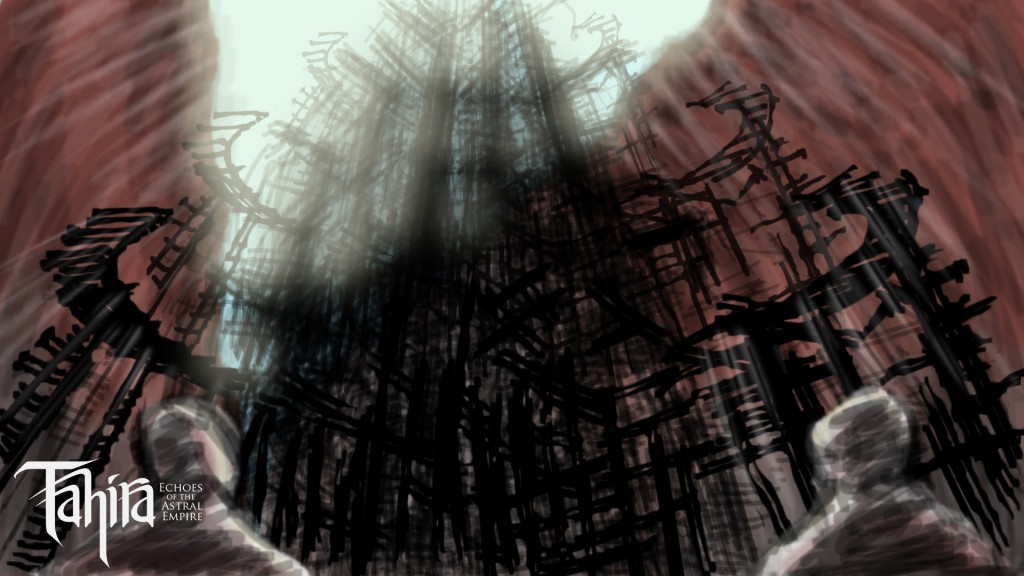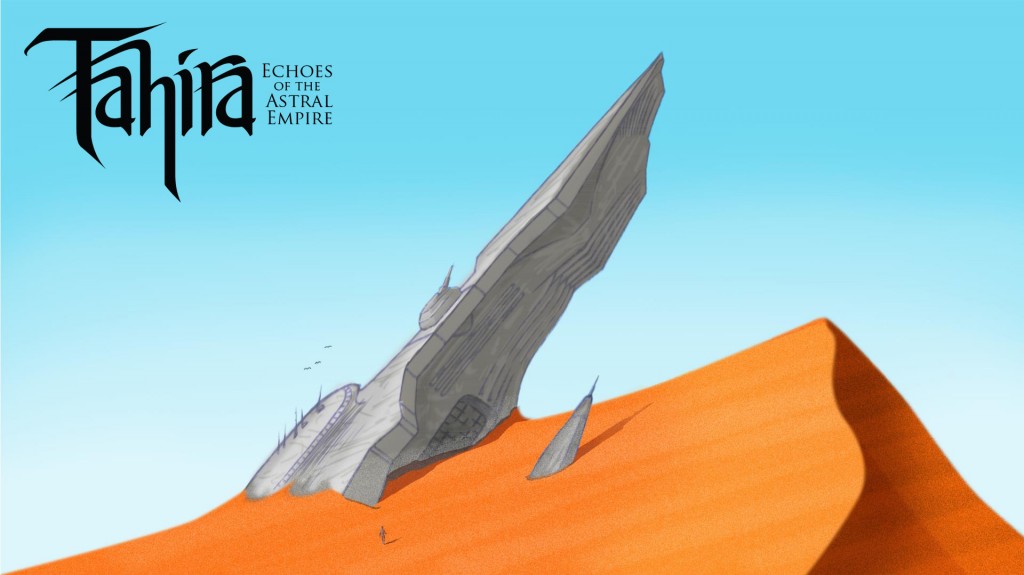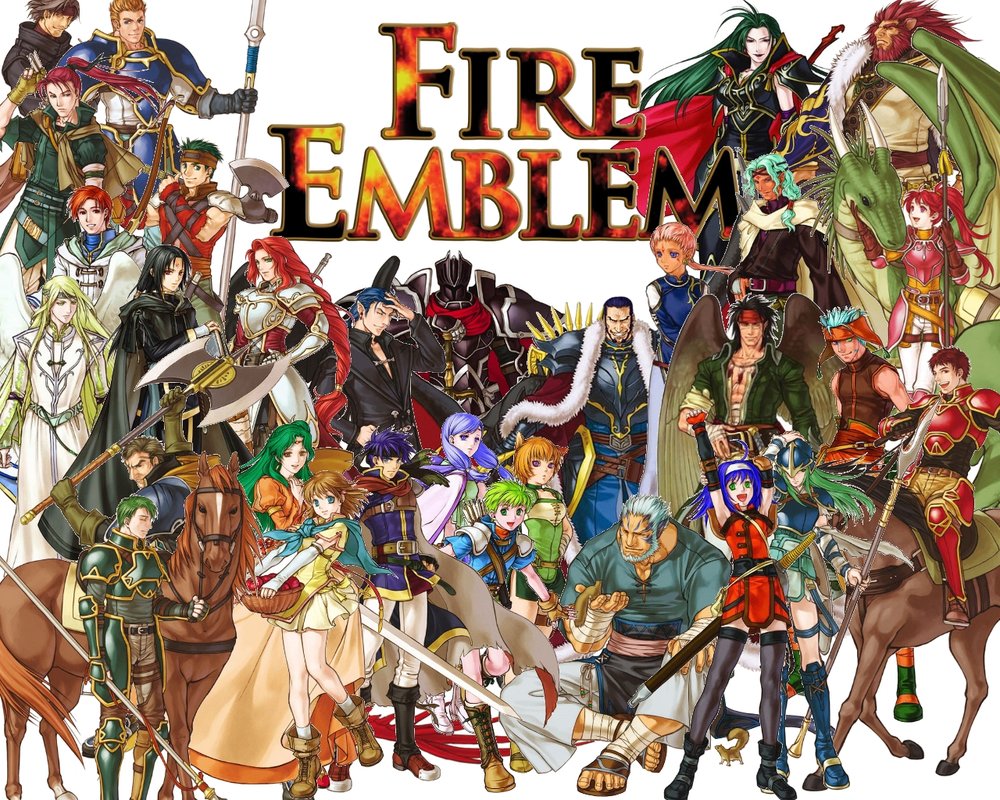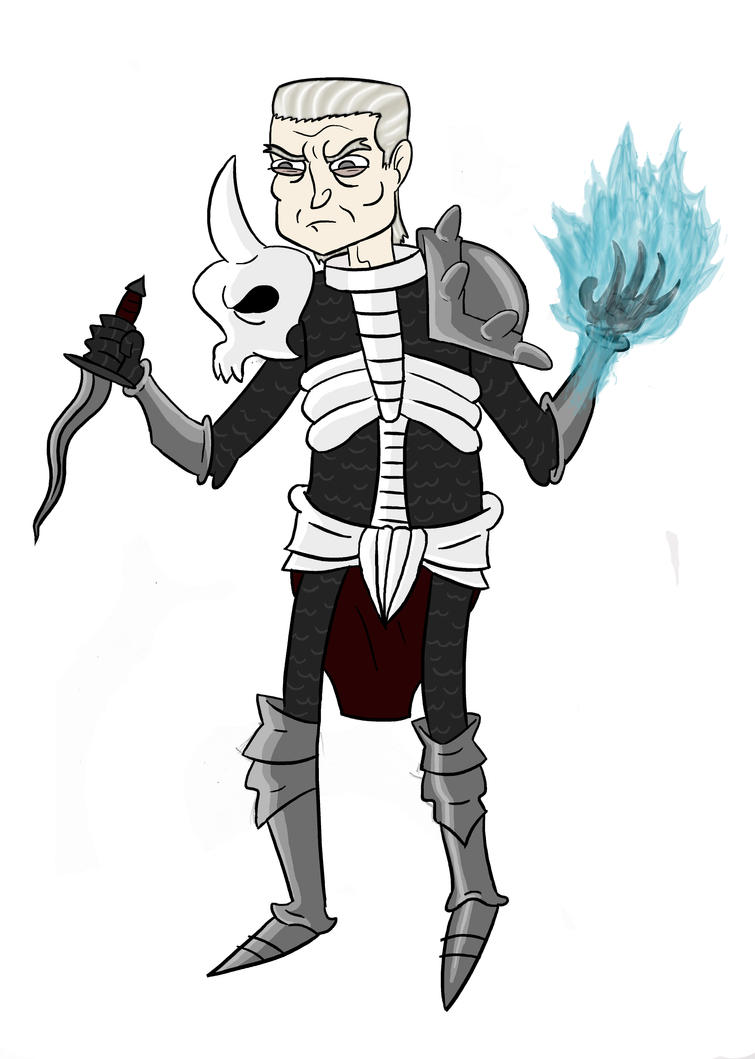Category: Design
Lead Writer Peter Castle and Lead Artist Peter Simpson sat down with the fine folks at Final Round Gaming to talk about Tahira: Echoes of the Astral Empire. You can read the full interview here.
Tell us the basics of your game world? Where are we?
Peter Castle (Writer): The game is set in a far-flung future, roughly a thousand years after the collapse of the Astral Empire. The Empire spanned a large part of the universe and represented the peak of humanity’s technological innovations.
On the planet that our story takes place, civilisation is still reeling from the Empire’s disintegration, and most of the population lives in isolated medieval kingdoms. A huge amount of knowledge has been lost, including the ability to use Empire technology. Its use required a particular genetic trait that was added artificially. Very few people still have this trait, rendering what remains of the Empire’s technology largely useless and the people who can use it valuable.
Who is Tahira? What is her influence on the story?
Peter Castle (Writer): Tahira is the very reluctant princess of a small and fairly unimportant kingdom called Avestan, which she runs away from before we pick up her story in the game. She returns home to find Avestan besieged by a mysterious army who are claiming to be descendants of the Astral Empire. Left without a choice the situation pushes her into a leadership role she doesn’t want, as she attempts to lead and protect what is left of her people.
This was the final test in our animation pipeline. We learnt some big lessons, which I’ll go into more detail on in another article. There were two big changes we made after running this test. The first was making a concerted effort to make sure the action in the reference footage looped back to its starting point. All of our animations need to loop and it saves a lot of animation work to have that done in the reference footage rather than in the animation process.
The other big change was moving to using a 3D head and 3D sword instead of using the reference footage. It proved very time consuming for Peter to have to make up the head shape and guess the angle of the sword. Instead he modeled a head and sword and then tracked them into the reference footage. This added step takes a little bit of time but saves far more than it adds.
Welcome to Creating a Game Character for Tahira: Echoes of the Astral Empire. In Part One: We discuss creating a character from scratch and walk you through the process we used to refine that character into a production ready concept.
Introduction
Hi, I’m Peter Castle, the Lead Writer at Whale Hammer Games. We’re five months into the development of our game, Tahira: Echoes of the Astral Empire, and so far we’ve had a lot of fun bringing the game’s characters to life. As we move from pre-production into production we wanted to share that process with you.
Bear in mind that everything I’m discussing is a work in progress and it’s likely that parts of it will change as we continue to develop the game.
The Written Concept
Tahira: Echoes of the Astral Empire has a strong narrative component. The first step in the character concepting process is for me to work out the basics of who a character is and to identify any key pieces of visual information that our Lead Artist Peter Simpson needs to get started. That information usually consists of things like gender, age, race and in the Claw’s case, his scar.
The Visual Concept
Peter takes that information and spends some time working on his interpretation. Once he’s satisfied, he shows me and we bounce it back and forth until we’re happy with the result. Somewhere in that process (it varies) we sit down with our Designer, Tom, and decide what combat role the character will fill. You’ll see in the first two concepts below that the Claw was initially drawn as an archer. The combat role decision is usually informed by the personality and history of the character as well as the needs of our combat system.
In the Claw’s case, Peter nailed the facial features on the first go and we moved straight into concepting the clothing and gear.
Original Claw Concepts
Clothing and Gear
Peter spent some time iterating on the Claw design so we had some options to choose from. We are always trying to find a design that conveys key information about the character to the player visually rather than needing that information to be explicitly stated in the written narrative.
This Isn’t Real Life
One of the things we had to consider when we put together his clothing and gear was what the player would actually see in the game. It’s all very well to look up your favourite fantasy and medieval TV shows and movies for clothing reference, but when your character is only a couple of centimeters in size you quickly find that anything with too much detail doesn’t work.
The Hair Conundrum
We liked the Wolverine-esque facial hair on the Claw, but decided it didn’t fit with the character’s vanity.
Some Designs Were Deemed a Bit Risqué
Practical and Dangerous
Peter scoured the web for all kinds of medieval and fantasy clothing. In the end we kept coming back to practicality. Characters like Jorah Mormont from HBO’s Game of Thrones have that mix of stylish but practical looking clothing and equipment and that was something we wanted to capture.
The Claw is a travelling mercenary, always on the road and ready to fight at a moment’s notice. The comfortable shirt and pants combination makes sense for someone who spends a lot of time in the saddle. We liked the heavier armour, but decided to use the light armour as it fits with the Claw’s personality and combat role in the game.
Final Concept
Colours
There are a number of factors we consider when we sit down to colour.
1) We need to create an interesting colour scheme that fits the character and the world.
2) Test that colour scheme against likely background colours.
3) Test its readability when you have a lot of other characters on the screen at the same time.
We’re still quite early in development and colours are something we’ll be spending a lot more time on later in the process. For now though, we played around with a few different schemes and found a couple that we liked.
Generally we find it easier to do something roughly, even if we aren’t going to use it. That means when it comes time to do it properly we can iterate rather than starting from scratch. Thankfully our colouring workflow means that any time spent on the colouring now will save time later in the project. I’ll go into this in a lot more detail in a future post.
If you’re looking to get started with colour, there is an excellent guide that Valve has put together on colour theory for Dota 2. You can view it here.
Colour Scheme Ideas
Final (For Now) Colour Concept
We were a bit surprised by how readable grey and beige are on a grey background.
Final Thoughts
That wraps up part one. If you have any questions or insights into the development process fire away in the comments.
In Part Two, we will take the Claw concept and begin the process of turning him into an animated character.
We’ve been working on Tahira: Echoes of the Astral Empire for coming up on 4 months now. That’s four months of pre-production, where we’ve been developing the world, the art style and the combat prototype.
The continuing challenge that Peter S and I face with the art and writing, is to develop a believable world that mixes science fiction with medieval elements.
In the world of Tahira, the Astral Empire spanned the galaxy, utilising advanced technology to roam the stars and to colonise far flung planets. In the time period our game is set, the Empire is in the distant past, society has been in decline for years and technology levels have regressed to medieval levels. But an Empire doesn’t just disappear. There are relics of the Empire’s glory days scattered across the world and some of them are still functional.
The interplay of the advanced technology with the more rudimentary tech has been really fun to play with and has given us a great deal of scope within the story to present the player with interesting stories and scenarios.
On the programming and game design side, Tom has been working away at developing our combat system. We have a system worked out on paper and he is busy implementing the fundamental parts of it so we can test it in practice and start iterating on it.
A couple of pieces of early concept art that explore the Science Fiction Elements:
Very early on in the Whale Hammer story, before we had a name, and even well before Pete S had joined the team, we knew that our first major game was going to be a turn-based tactics game. Both Pete C and I grew up playing these games, and being turn-based makes the games a bit simpler to design, so they’re more manageable choice for a first project. Another reason we liked turn-based tactics as a project, is that the few existing tactics games haven’t changed much over the past 15 years, so there’s plenty of room for improvement. I especially see opportunity to make the games less punishing to the player.
The death of a character during combat is something that I really don’t think existing turn-based tactics games execute on very well at all, and is something I think we can really improve on. Anyone who’s played a game from the Fire Emblem franchise will know how frustrating those games can be, when twenty minutes into a level, a character is killed. In the Fire Emblem universe when a character dies, they die for good. So as the player, you’re faced with a fairly unpleasant choice: let the character die, or restart the level, rendering the chunk of time you’d spent on the level wasted.
A notable exception to this trend is XCOM: Enemy Unknown, which deals with character deaths by making each individual character – and hence, their dying – completely inconsequential to the game’s story. While this worked for XCOM, we want our game to be very character-driven, so it’s not really an option for us.
First of all, I want to go into more detail about why you don’t want to permanently kill your characters. Let’s say I’m making a turn-based tactics game – We’ll call it “Epic”. Epic will be the story of a tight-knit band of mercenaries who get drawn into an aeons-long struggle between Good and Evil, and find themselves playing a pivotal role. This is a completely original idea that I thought of just now and in no way lifted from anything else. Our hero in Epic will be Jason, leader of the mercenary band, with his lieutenants Freya and Seth. Now, because we want this game to feel epic, we need to raise the stakes somehow, and letting characters die seems a good way to do that. So, if a character other than Jason dies in battle, they die permanently (if Jason dies, the player hits a Game Over screen, because he’s too important to the plot to be dead). Along with raising the stakes, this has the added benefit of adding consistency to the game world. All the enemy soldiers we’re killing won’t be coming back to life, after all.
However, without even mentioning the problem about player frustration I outlined above, we start to have to jump through some pretty big hoops to make this work. For starters, we’ll need to add a steady stream of playable characters. We can’t have the player running out of playable characters for a mission. But then, who are all these characters, and why do we care about them? This is a problem Fire Emblem really suffers from. By the final act of a Fire Emblem game, you can often have a roster of upwards of 30 different guys, many of whom have played literally no role in the story. Each of these characters has some kind of back-story, but there isn’t any reason for the player to care about them, unless they’re being used regularly in combat. To compound that issue, we also have the problem that there’s not enough development of the characters the player most cares about. In any game, you only have a limited amount of time to spend exploring characters, and having that many characters inevitably means that some will be forgotten.
In addition to this, we presumably do have some plot-driving playable characters. Jason is the obvious one in Epic, but Freya and Seth are also going to be relevant to the story. And presumably, they’ll have an ally from the forces of Good. We’ll call him Gabriel. What if any of them die? Who’s going to deliver their dialogue? Do we just pass it on to some other character and hope that works? But then what if that guy dies? Point being: if your game is driven by story, and if you as the storyteller don’t have control over if or when the characters die, you’re going to lose control over your story.
So if you can’t have your characters die, then what happens when they run out of health? They’re obviously removed from the mission, but what then? Are they immediately available for the next mission? That’s not great for a couple of reasons. First, it sucks the tension out of the combat, because the player has less incentive to try and keep everyone alive. You still can’t throw units into the meat grinder – you’ll end up without enough units to finish the mission – but there’s less sense that you’re protecting these people, and trying to keep them from harm. More importantly, it makes no sense. Why don’t our guys die? The other guys die. Any evil soldier we kill isn’t going to come back later, so why are our guys apparently immortal? And then, if you want to kill a character as part of the story, that makes even less sense. Going back to Epic as our example, let’s say that we want to have Seth die at a critical moment in the game, in order to bring into question whether this fight is really worth it for Jason and his friends. The problem is, Seth’s already died like, four times in missions. Why does this death stick, where the others didn’t? This is detrimental to any sense of immersion the player has, which we really want to avoid, given that we’re making a story-focused game.
Clearly, what’s needed is some kind of middle-ground approach. There needs to be a consequence for letting characters fall in battle, but it can’t feel too dire. One of the solutions I like the most is to make characters temporarily unavailable if they’re felled in battle. For example, let’s say Freya is felled in a vicious, drawn-out conflict with a horde of zombies. We can’t have her die, so instead she’s critically wounded, and has to take some time out from battle to recover. So in our next fight, against Gerome, the mad necromancer animating these zombies, she’s unavailable, and we have to use someone else. This gives our players a reason to keep characters alive, and makes slightly more sense than them being magically immortal. It’s still not perfect, though – we haven’t really addressed the whole ‘how do these guys consistently not die?’ idea. We’ve also introduced another problem: What if Freya, Seth and Gabriel all go down fighting the horde of zombies, along with a few other characters? Who’s left to take on Gerome and the rest of his horde? In order to ensure a constant stream of playable characters, we end up with the same problem as character death, namely a bloated roster.
It seems like we really do need some guys who will die, and who can be easily replaced. Let’s introduce some unnamed mercenaries from Jason’s company. We don’t know who these guys are, and truth be told, we don’t really care. Their job will be to act as completely replaceable guys, who the player can use as front-line warriors, without having to worry about having enough guys for the next mission. These nameless mercenaries play the additional role of allowing us to scale up our battles without having to have more named characters. Another plus is that they make our named characters feel more like leaders, something that can be further emphasised with gameplay mechanics. We get to see Jason, Freya, Seth and Gabriel lead a great army into battle, and have them make a difference in fights where one man shouldn’t be able to turn the tide, further reinforcing the idea that these guys are warriors of incredible strength and skill.
We’ve now got the feeling that our soldiers are indeed mortal, without named characters dying, and we’ve even managed to make our battles seem more epic in scale. Admittedly, there’s still some sense of disconnect, with named characters being unable to die, but there is now a sense of the company’s mortality. This means that combat scenarios can be designed such that named characters rarely fall in battle, effectively meaning that the player barely sees this logic gap, and (hopefully) isn’t really bothered by it.
So what we end up with is essentially two systems used to ensure our named characters stay alive, while still having a sense of peril and maintaining immersion. One system adds a consequence to the defeat of a named character, without removing them completely from the game. The other gives our army soldiers who do die, making the whole thing feel more like a real war.
What do you guys think about character death in games? What solutions have you seen that you liked? Let us know in the comments.
-Tom C.

